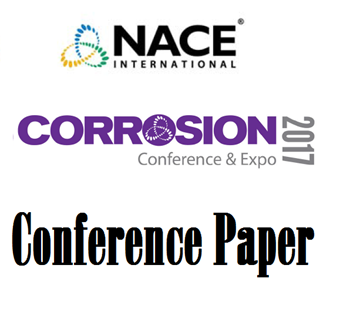Search
Individual Conference Papers
View as
Sort by
Display
per page
Understanding Pitting Corrosion Behaviour of X-65 (UNS K03014) Carbon Steel in CO2 Saturated Environments: The Temperature Effect
Product Number:
51314-4214-SG
ISBN:
4214 2014 CP
Publication Date:
2014
$20.00
Understanding Sour Service Performance of Coiled Tubing
Product Number:
MPWT19-14407
Publication Date:
2019
$0.00
Understanding the Breathing-Air System in Abrasive Blasting
Product Number:
41215-891-SG
Publication Date:
2015
$20.00
Understanding the Corrosion Performance and Mechanism of Stainless and Carbon Steels in Different Storage and Transportation of Pyrolysis Oil Environments
Product Number:
51324-21226-SG
Publication Date:
2024
$40.00
Understanding the Discrepancies in Wet Bottom and Dry Bottom MASTMAASIS Testing Results of AA2060
Product Number:
51317--9171-SG
ISBN:
9171 2017 CP
Publication Date:
2017
$20.00
Understanding the Effect of Pigging and Corrosion Inhibitor Injection on Microbiologically Influenced Corrosion of Carbon Steel Pipelines
Product Number:
51319-13103-SG
Publication Date:
2019
$20.00
Understanding the Effect of Water Chemistry and Surface Grinding on the Stress Corrosion Cracking Initiation of Filler Metal 82
Product Number:
ED22-17143-SG
Publication Date:
2022
$20.00
Understanding the Effects of NaCl Concentration on Zinc Phosphate Pigment Morphology and Composition by Advection Through Phenoxy Thermoplastic Free Films
Product Number:
41215-879-SG
Publication Date:
2015
$20.00
Understanding the Effects of NaCl Concentration on Zinc Phosphate Pigment Morphology and Composition by Advection Through Phenoxy Thermoplastic Free Films
Product Number:
41216-946-SG
Publication Date:
2016
$20.00
Understanding The Effects of Test Solution Chemistry on Sour Service Testing at a pH Range Relevant to Flexible Pipe in Oil and Gas Applications
Product Number:
51323-19055-SG
Publication Date:
2023
$20.00
Understanding The Effects Of Zn Injection And OLNC-Treatment On 316 Stainless Steel Oxide Under Simulated BWR Conditions
Product Number:
ED22-17227-SG
Publication Date:
2022
$20.00
Understanding the False Positive of Modified Martensitic Steels in Sweet & Sour Service Conditions using a Point Defect Model Perspective
Product Number:
51323-18901-SG
Publication Date:
2023
$20.00












